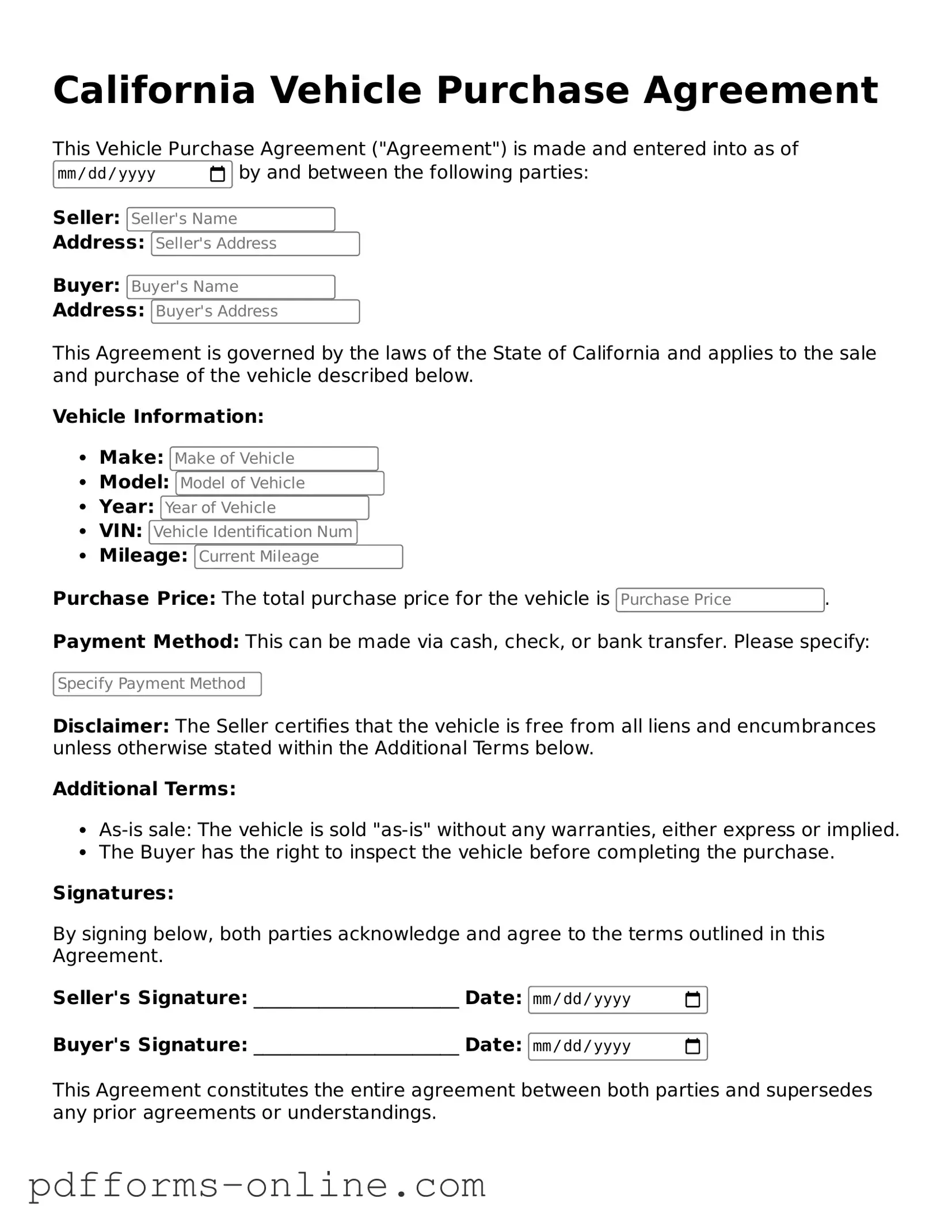The California Vehicle Purchase Agreement form is similar to the Bill of Sale. A Bill of Sale serves as a legal document that records the transfer of ownership from the seller to the buyer. It typically includes details such as the vehicle's make, model, year, and VIN, along with the purchase price. Both documents serve to protect the interests of both parties during the transaction, providing proof of the sale and ownership transfer.
Another document akin to the Vehicle Purchase Agreement is the Vehicle Title. The Vehicle Title is an official document issued by the state that proves ownership of the vehicle. When a vehicle is sold, the title must be transferred to the new owner. Like the Vehicle Purchase Agreement, the title includes important details about the vehicle and is essential for legally registering it under the new owner’s name.
The Purchase Order is also similar to the Vehicle Purchase Agreement. A Purchase Order is a document created by the buyer that outlines the terms of the purchase, including the item description, quantity, and price. In the context of vehicle purchases, it can serve as a preliminary agreement before the final purchase is completed, similar to how the Vehicle Purchase Agreement finalizes the transaction.
The Sales Contract shares similarities with the Vehicle Purchase Agreement as well. A Sales Contract details the terms of sale between a buyer and seller. It includes specifics like payment terms, delivery conditions, and warranties. Both documents aim to ensure that both parties understand their rights and obligations in the transaction.
The Financing Agreement is another related document. When a buyer finances a vehicle, this agreement outlines the loan terms, including interest rates and repayment schedules. Just like the Vehicle Purchase Agreement, it formalizes the financial aspects of the purchase, ensuring that both parties are aware of their commitments.
The Trade-In Agreement is also comparable to the Vehicle Purchase Agreement. This document outlines the terms under which a buyer trades in their old vehicle as part of the purchase of a new one. It includes details about the trade-in vehicle, its condition, and the credit applied towards the new purchase, similar to how the Vehicle Purchase Agreement details the sale of the new vehicle.
The Lease Agreement can be considered similar as well. While it pertains to leasing rather than purchasing, it includes terms regarding the use of a vehicle, payment obligations, and responsibilities of both the lessor and lessee. Both agreements establish clear expectations for the parties involved, though the Lease Agreement is temporary compared to the permanent nature of a purchase.
The Warranty Agreement is another document that can be related to the Vehicle Purchase Agreement. This document outlines the terms of any warranties provided with the vehicle, such as coverage for repairs or defects. Both agreements ensure that the buyer is aware of the protections available after the purchase, contributing to a smoother ownership experience.
Lastly, the Insurance Policy is relevant to vehicle transactions. While it is not a purchase agreement, it is essential for protecting the buyer’s investment. The policy outlines coverage details and responsibilities in case of accidents or damages. Like the Vehicle Purchase Agreement, it plays a crucial role in the ownership process, ensuring that the buyer is financially protected after acquiring the vehicle.
